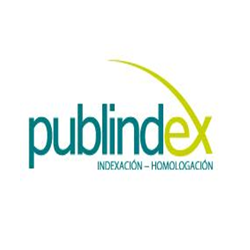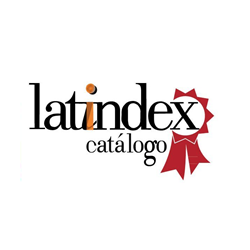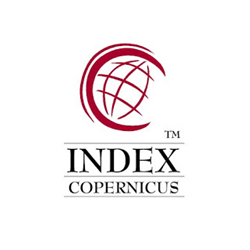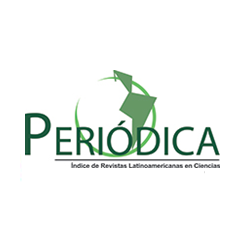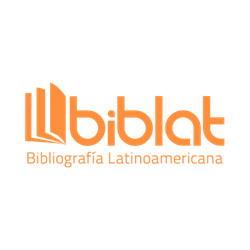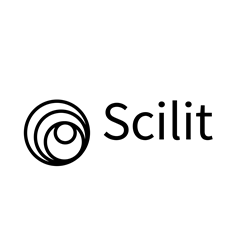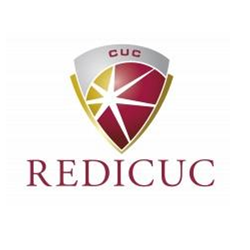Effect of the inclusion of amaranth leaves (Amaranthus dubius) on the properties of a fruity yogurt
DOI:
https://doi.org/10.17981/ingecuc.17.1.2021.25Keywords:
dried, blend, flour, protein, nutritional properties, foodAbstract
Introduction— The Amaranthus dubius is a herbaceous plant with high nutritional value thanks to its high content of protein, vitamins and minerals. Its agro-industrial use represents a food alternative, for which it is necessary to know the process parameters and the concentrations of use as raw material for the elaboration of a yogurt.
Objective— To evaluate the effect of the inclusion of amaranth leaf flour on the properties of a fruity yogurt with soursop pulp (Annona muricata L.)
Methodology— The production process was designed, incorporating the piglet in the form of flour. The time for humidity in equilibrium at 65°C was determined, the curve was adjusted to the Page model and four treatments were established (P, T1, T2, and T3), with piglet concentrations of 0%, 10%, 15% and 20% respectively. A DCA (completely randomized design) was formulated, to evaluate the effect of the addition of flour, on the physicochemical, nutritional and sensory properties of fruity yogurt.
Results— Equilibrium humidity was reached at 3h, with page model constants (C: 0.9585; K: 0.0133 and n: 2.2830). It was evidenced that pigtail improved the protein profile of the yogurt samples. In addition, the T3 formulation presented the highest protein content (7.93%), as well as vitamin C (0.15%), acidity (0.84%) and pH (4.21%). The formulations with the addition of milkweed showed a lower acceptance by the sensory panel.
Conclusions— The incorporation of 20% amaranth leaf flour into the yogurt made it possible to increase the protein content by 6.21%, although the sensory properties should be improved.
Downloads
References
M. E. Tapia, Cultivos andinos subexplotados y su aporte a la alimentación, 2 Ed. STGO, CH: FAO, 2000. Disponible en https://bibliotecadigital.infor.cl/handle/20.500.12220/3020
I. Acevedo, O. Garcia, I. Acevedo & C. Perdomo, “Valor nutritivo del bledo (Amaranthus spp.) identificado en el municipio Morán, Estado Lara,” Agrollania, vol. 4, pp. 77–94, 2019. Disponible en http://revistas.unellez.edu.ve/index.php/agrollania/article/view/65
L. Garcia-Parra, S. Ruiz, H. Mendoza & H. Pineda, “Utilización de amaranthus dubius (amaranthaceae) como alternativa alimentaria en cerdo criollo mestizado,” Recia, vol. 2, no. 2, pp. 331–337, Jul. 2010. https://doi.org/10.24188/recia.v2.n2.2010.312
E. Olivares & E. Peña, “Bioconcentración de elementos minerales en Amaranthus Dubius (bledo, pira), creciendo silvestre en cultivos del Estado Miranda, Venezuela, y utilizado en alimentación,” Interciencia, vol. 34, no. 9, pp. 604–611, 2009. Recuperado de https://www.interciencia.net/wp-content/uploads/2018/01/604-OLIVARES-8.pdf
V. S. Vedia-Quispe, P. D. Gurak, S. K. Espinoza & J. A. Ruano-Ortiz, “Calidad fisicoquímica, microbiológica y sensorial de tallarines producidos con sustitución parcial de sémola de trigo por harina de amaranto,” renhyd, vol. 20, no. 3, pp. 190–197, 2016. https://doi.org/10.14306/renhyd.20.3.215
O. X. Torres, A. F. Vallejos & J. M. Castañeda, “Productos a base de amaranto como alternativas nutricionales para la lonchera escolar y su importancia en el desarrollo infantil,” Holopraxis, vol. 1, no. 2, pp. 117–139, Dec. 2017. Disponible en https://revistaholopraxis.com/index.php/ojs/article/view/19
K. Montero, E. Molina & A. Sánchez, “Composición química del Amaranthus dubius: una alternativa para la alimentación humana y animal Chemical composition of Amaranthus dubius:an alternative for human and animal feeding,” Rev Fac Agron, vol. 28, no. 1, pp. 619–627, Nov. 2011. Disponible en https://produccioncientificaluz.org/index.php/agronomia/article/view/27033
V. D. Capriles And J. A. G. Arêas, “Avaliação da qualidade tecnológica de snacks obtidos por extrusão de grão integral de amaranto ou de farinha de amaranto desengordurada e suas misturas com fubá de milho,” BJFT, vol. 15, no. 1, pp. 21–29, 2012. Disponível em http://bjft.ital.sp.gov.br/
K. C. Montero-Quintero1, R. Moreno-Rojas, E. A. Molina, M. S. Colina-Barriga & A. B. Sánchez-Urdaneta, “Efecto del consumo de panes integrales con amaranto (Amaranthus dubius Mart; ex Thell;) sobre la respuesta glicémica y parámetros bioquímicos en ratas Sprague dawley,” Nutr Hosp, vol. 31, no. 1, pp. 313–320, 2015. https://doi.org/10.3305/nh.2015.31.1.7695
M. Tamsen, H. Shekarchizadeh & N. Soltanizadeh, “Evaluation of wheat flour substitution with amaranth flour on chicken nugget properties,” LWT - Food Sci Technol, vol. 91, pp. 580–587, May 2018. https://doi.org/10.1016/j.lwt.2018.02.001
A. Chauhan, D. C. Saxena & S. Singh, “Total dietary fibre and antioxidant activity of gluten free cookies made from raw and germinated amaranth (Amaranthus spp.) flour,” LWT - Food Sci Technol, vol. 63, no. 2, pp. 939–945, Oct. 2015. https://doi.org/10.1016/j.lwt.2015.03.115
F. Zare, J. I. Boye, V. Orsat, C. Champagne & B. K. Simpson, “Microbial, physical and sensory properties of yogurt supplemented with lentil flour,” Food Res Int, vol. 44, no. 8, pp. 2482–2488, Oct. 2011. https://doi.org/10.1016/j.foodres.2011.01.002
N. Babio, G. Mena-Sánchez & J. Salas-Salvadó, “Más allá del valor nutricional del yogur: ¿un indicador de la calidad de la dieta?,” Nutr Hosp, vol. 34, no. 4, pp. 26–30, 2017. Disponible en https://www.nutricionhospitalaria.org/magazines/magazines
R. A. Parra, “Yogur en la salud humana,” Rev Lasallista Investig, vol. 9, no. 2, pp. 162–177, 2012. Disponible en http://repository.lasallista.edu.co/dspace/handle/10567/969
L. A. Moreno, P. Cervera, R. Ortega, J. Díaz, E. Baladia, J. Basulto, S. Bel, I. Iglesia, A. López-Sobaler, M. Manera, E. Rodríguez, A. Santaliestra, N. Babio & J. Salas-Salvadó, “Evidencia científica sobre el papel del yogur y otras leches fermentadas en la alimentación saludable de la población española,” Nutr Hosp, vol. 28, no. 6, pp. 2039–2089, 2013. Disponible en https://www.nutricionhospitalaria.org/magazines/magazines
R. Parra, “Utilization of Rubas (Ullucus Tuberosus) As an Alternative in the Preparation and Characterization of Yogurt,” Temas Agrar, vol. 20, no. 1, pp. 91–103, 2015. Disponible en https://biblat.unam.mx/es/revista/temas-agrarios/articulo/uso-de-rubas-ullucus-tuberosus-en-la-elaboracion-y-caracterizacion-de-yogur
Y. E. García-Pacheco, M. Prieto & C. Fuenmayor, “Cinética, modelación y pérdidas de carotenoides para el secado de ahuyama (Cucurbita moschata) en cubos,” Agron Colomb, vol. 34, no. 1, pp. S574–S576, 2016. Disponible en https://revistas.unal.edu.co/index.php/agrocol/issue/archive
M. José & R. Muñoz, Desarrollo de una jalea de guanábana (Annona Muricata L.) con polidextrosa. UIO, PE: USFQ, 2012. Disponible en https://repositorio.usfq.edu.ec/handle/23000/3638
O. García G. & I. Ochoa, Procesamiento de kumis y yogurt: Preparación de yogurt, Cartilla No. 2. BO, CO: SENA, 2011. Disponible en https://babel.banrepcultural.org/digital/collection/p17054coll22/id/397/
AOAC, Official Method of Analysis Association of Analytical Chemists, 19 ed. WA, USA: AOAC, 2012.
Métodos de Ensayo Productos Alimenticios, ICONTEC, 2004. Disponible en https://www.icontec.org/
D. C. Harris, Análisis químico cuantitativo, 3 Ed. BAR, ES, 2003.
J. Lim, “Hedonic scaling: A review of methods and theory,” Food Qual Prefer, vol. 22, no. 8, pp. 733–747, Dec. 2011. https://doi.org/10.1016/j.foodqual.2011.05.008
F. S. Vianna, A. C. V. da Cruz, B. Costa-Lima, A. P. Salim, C. Fasura, M. Pereira, P. Panzenhagen, R. Rachid, R. M. Franco, C. A. Conte-Junior & A. C. de Oliveira, “Milk from different species on physicochemical and microstructural yoghurt properties,” Cienc Rural, vol. 49, no. 6, pp. 1–15, 2019. https://dx.doi.org/10.1590/0103-8478cr20180522
L. A. Jiménez, L. Barrientos & E. Albarrán, “Desarrollo y evaluación de un yogurt bebible adicionado de extracto liofilizado de Justicia spicigera como colorante natural,” e-CUCBA, vol. 10, no. 9, pp. 25–34, Dec. 2018. https://doi.org/10.32870/e-cucba.v0i9.101
USDA, Food Search. [online . Available: https://www.usda.gov/
C. Hidalgo, “Elaboración de un producto nutritivo a base de yogurt afrutado con psidium guajava (guayaba) enriquecidos con hierro y vitamina C,” trabajo final licenciatura, UNIAP, IQT, PE, 2017. Disponible en https://repositorio.unapiquitos.edu.pe/handle/20.500.12737/4714
F. Coskun & L. Karabulut, “Effects of pine honey on the physicochemical, microbiological and sensory properties of probiotic yoghurt,” Food Sci Technol, vol. 39, S2, pp. 616–625, Dec. 2019. https://doi.org/10.1590/fst.24818
S. S. Senadeera, P. H. P. Prasanna, N. W. I. A. Jayawardana, D. C. S. Gunasekara, P. Senadeera & A. Chandrasekara, “Antioxidant, physicochemical, microbiological, and sensory properties of probiotic yoghurt incorporated with various Annona species pulp,” Heliyon, vol. 4, no. 11, pp. 1–18, Nov. 2018. https://doi.org/10.1016/j.heliyon.2018.e00955
J. M. Rodríguez, J. A. Serna, M. Uribe & B. Klotz, “Aplicación de la metodología comercial de superficie de respuesta para evaluar el efecto de la concentración de azúcar y de cultivos iniciadores sobre la cinética de fermentación del yogurt,” Rev Mex Ing Química, vol. 13, no. 1, pp. 213–225, 2014. Disponible en https://intellectum.unisabana.edu.co/handle/10818/27275?locale-attribute=en
C. A. Curti, P. M. Vidal, R. N. Curti & A. N. Ramón, “Chemical characterization, texture and consumer acceptability of yogurts supplemented with quinoa flour,” Food Sci Technol, vol. 37, no. 4, pp. 627–631, Oct. 2017. Disponible en https://ri.conicet.gov.ar/handle/11336/66826
D. Beswa, N. R. Dlamini, M. Siwela, E. O. Amonsou & U. Kolanisi, “Effect of amaranth addition on the nutritional composition and consumer acceptability of extruded provitamin A-biofortified maize snacks,” Food Sci Technol, vol. 36, no. 1, pp. 30–39, Jan. 2016. https://doi.org/10.1590/1678-457X.6813
A. dos R. Lemos, V. D. Capriles, M. E. M. Pinto e Silva & J. A. G. Arêas, “Efeito da incorporação de amaranto nas propriedades físicas e no valor nutritivo do pão de queijo,” Cienc Tecnol Aliment, vol. 32, no. 3, pp. 427–431, Jul. 2012. https://doi.org/10.1590/S0101-20612012005000079
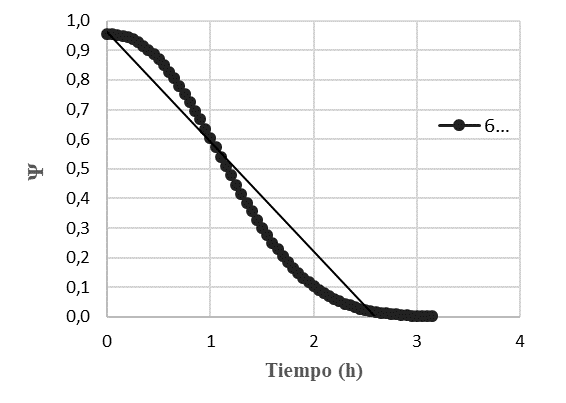
Published
How to Cite
Issue
Section
License
Copyright (c) 2021 INGE CUC

This work is licensed under a Creative Commons Attribution-NonCommercial-NoDerivatives 4.0 International License.
Published papers are the exclusive responsibility of their authors and do not necessary reflect the opinions of the editorial committee.
INGE CUC Journal respects the moral rights of its authors, whom must cede the editorial committee the patrimonial rights of the published material. In turn, the authors inform that the current work is unpublished and has not been previously published.
All articles are licensed under a Creative Commons Attribution-NonCommercial-NoDerivatives 4.0 International License.


 English
English
 Español (España)
Español (España)

